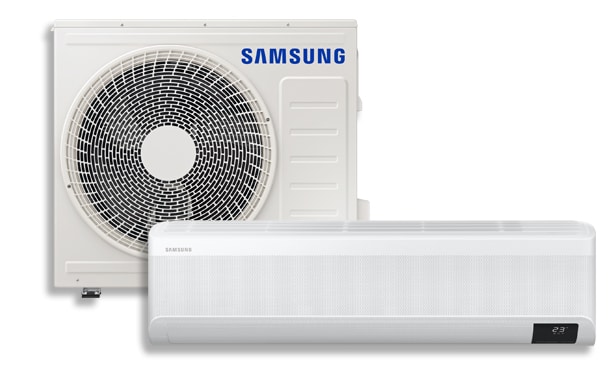“Baby” Air Conditioners All Grown Up
 If you ever travel overseas, you’ll notice the rest of the world handles air conditioning in a very different way than we do here in the USA. You’ll see lots of briefcase-sized air conditioners connected to small, wall-mounted air handlers inside, usually controlled by a wireless thermostat. These tiny systems are incredibly quiet and, as it happens, also very energy efficient.
If you ever travel overseas, you’ll notice the rest of the world handles air conditioning in a very different way than we do here in the USA. You’ll see lots of briefcase-sized air conditioners connected to small, wall-mounted air handlers inside, usually controlled by a wireless thermostat. These tiny systems are incredibly quiet and, as it happens, also very energy efficient.
Few buildings outside the USA were designed with central heating and air conditioning in mind. They lack the ductwork that we find in our homes, schools and businesses. Meanwhile, rising incomes in Asia combined with a common tropical climate created a space for cooling systems that were flexible and easy to install. The first manufacturers to spot the opportunity were the large consumer electronics firms like Panasonic, Mitsubishi, Fujitsu and the like. Thirty years ago they came up with the “ductless mini-split” air conditioner. These units usually come with reversing valve technology. That allows these units to act as heat pumps so they can provide heat, too.
 What they don’t and can’t do is cool an entire building. Each room being cooled needs its own wall-mounted air handler, which are much more obtrusive (and expensive) to install than a duct run and a register. There are some applications where ductless mini-splits can replace central systems, but we don’t normally recommend that. Ductless systems aren’t engineered as robustly as central systems. They don’t have the same expected life and can be hard to find repair parts for. But there are plenty of occasions where they are just the ticket, like for server rooms in commercial buildings or additions and ADUs in residential properties.
What they don’t and can’t do is cool an entire building. Each room being cooled needs its own wall-mounted air handler, which are much more obtrusive (and expensive) to install than a duct run and a register. There are some applications where ductless mini-splits can replace central systems, but we don’t normally recommend that. Ductless systems aren’t engineered as robustly as central systems. They don’t have the same expected life and can be hard to find repair parts for. But there are plenty of occasions where they are just the ticket, like for server rooms in commercial buildings or additions and ADUs in residential properties.
If you find yourself with a location that needs cooling (or heating) and a central system isn’t in place to do the job, think about using a ductless mini-split. Once you get accustomed to the sight of the air handler (they’re usually too quiet to hear) you’ll just be comfortable without really being aware of how.
Just don’t lose the wireless thermostat. They’re expensive to replace.
